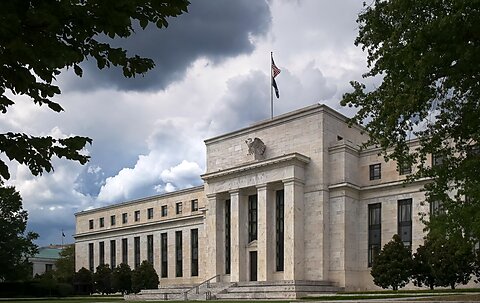The Federal Open Market Committee (FOMC) will meet this week to deliberate on changing the target for the federal funds rate (FFR), the main policy rate used to affect economy-wide changes. After a series of poor employment reports, betting markets and business media expect a rate cut, with a 25 basis point decrease the most likely outcome. However, last week’s inflation report shows that prices are increasing much faster than the Fed’s 2 percent target, indicating real concerns of a supply shock that has caused both inflated prices and unemployment. In such situations, guidance for monetary policy is ambiguous, with a standard monetary policy rule advocating no change to rates or even a slight increase.
To be clear, the point of this article is not to advocate any specific rate decision. In isolation, a minor change to the FFR will neither meaningfully help nor hurt the economy. As our prior work has shown, monetary policy is not as important as other market forces, and the Fed does not really control interest rates, let alone macroeconomic outcomes like inflation. In fact, mortgage rates fell last week, well before the upcoming FOMC meeting. Nor should people expect the Fed to save the economy from the negative effects of bad economic policy, especially supply shocks like tariffs that raise both inflation and unemployment, giving the Fed contrasting signals.
Rather, the point of this article is to highlight how our current predicament exposes flaws in the monetary policy framework. The primary such flaw is the lack of any objective standard to gauge what the “optimal” value of the FFR is. Ample research has shown that monetary policy rules offer the best policy prescriptions and are likely the best-case scenario for a world with a central bank. (Of course, there are several private market-based currency provision alternatives in a world without a central bank.)
The best guess, then, for the optimal value of the FFR is the value computed by using such rules. While there are numerous rules the Fed could follow, one example is the Taylor rule: an equation that relates the Fed’s policy rate target to its dual mandate macro indicators (inflation and unemployment). Using the most recently available data, the Taylor rule suggests the Fed’s current target is roughly correct. The following equation is a simplified Taylor rule:
FFRt = 0.8 x FFRt‑1 + ( 1 — 0.8 ) x [ 1.5 x Inflationt — 0.5 x ( Unemployment Ratet — NAIRUt ) ]
The current value of the FFR is 4.33%, and the latest annualized 3‑month CPI inflation was 3.5%. Using August’s unemployment rate of 4.3% and a 4.32% natural rate (NAIRU), the implied current FFR should be:
FFRSept 2025 = 0.8 x (4.33%) + 0.2 x [ 1.5 x (3.5%) — 0.5 x (4.3% — 4.32%) ] = 4.52%
Given that the FOMC’s current target range for the FFR is 4.25 to 4.5%, a standard rule advises no change or maybe even a 25 basis point increase to this target. It certainly does not advocate the rate cut that markets and analysts expect. But the way the Fed sets these expectations is another major flaw and could also be fixed by following a rule.
Understandably, the Fed does not want to become a source of macroeconomic fluctuations itself. This can happen if the Fed surprises markets by setting the target rate in a manner that is different from private sector expectations. To avoid this, the Fed routinely engages in forward guidance, using public statements and reports to indicate its course of action well in advance of FOMC meetings. The drawback to this approach is that new data could alter the Fed’s view on the economy. The Fed would then be forced to choose between making an incorrect rate decision to prevent surprising markets or altering its previously indicated stance by correctly setting the rate but surprising markets.
This scenario describes our current situation. As shown above, the latest inflation data support holding rates steady at best and may even support an increase. But the Fed’s statements, primarily in response to weakening labor market data, have all indicated a rate cut. The Fed must now choose between following the correct economic policy or risk surprising markets (and its credibility) by reversing its indicated course of action.
This problem could also be fixed if the Fed set the target rate by following a rule. Since rules offer a direct arithmetic calculation that turns macro data into an interest rate target, they are the most effective form of forward guidance. All market participants, from consumers to Wall Street, would react to data in real time and know with certainty what the Fed’s policy rate target will be. As a result, macroeconomic fluctuations would be driven by the underlying economy rather than by FOMC meetings.
No one should expect monetary policy to be perfect. It cannot overcome natural business cycles or bad policies. The best version of monetary policy under our current system is for the Fed to commit to rules-based policymaking going forward. Absent such reforms, Congress must act to secure policy consistency by mandating that the Fed adhere to a rule and provide public justification for any deviations.
The author thanks Jerome Famularo for his research assistance in the preparation of this blog.
















